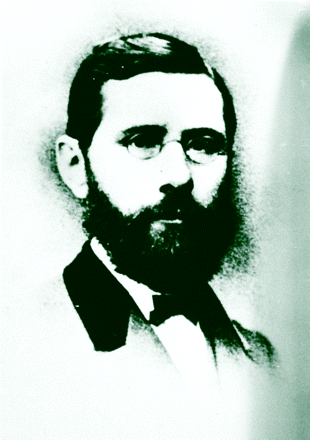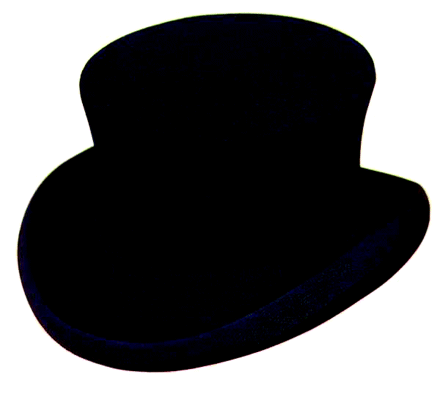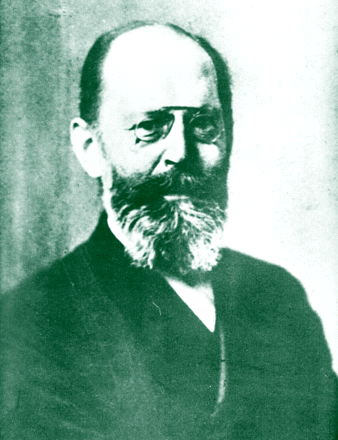Our Man in Dorpat: Rudolf Buchheim and the Birth of Pharmacology
“What Is Past Is Prologue”
In the nineteenth century, three major groups of drugs were discovered: alkaloids, anesthetics, and sedative-hypnotics. The first half of the century saw the discovery of alkaloids, beginning with the isolation of morphine from opium by Friedrich Serturner (1783–1841). Joseph Louis Gay-Lussac (1778–1850) was the first influential figure to recognize the importance of Serturner’s work, and he encouraged further research along the same lines. Between 1820 and 1840, scores of alkaloids were isolated, a great many of them by pharmacists. For centuries, pharmacists had worked with alkaloid-containing plant drugs, preparing liquid and solid extracts for medicinal use. The physiologists Francois Magendie (1783–1855) and Claude Bernard (1813–1878) began to study the effects of some of these alkaloids and thus contributed to the gestation of pharmacology (1), along with the lesser-known Mateo J. B. Orfila (1787–1863), who went on to establish the science of toxicology (2). These men and their proteges undertook the first steps in creating pharmacological tests; however, their assays were intended as tools for physiological experiments and for solving forensic problems.
During the same time period, the anesthetic properties of ether, chloroform, and nitrous oxide were discovered. These substances, hitherto used to some extent as “recreational” drugs, were brought into clinical use. This was largely because of the efforts of dentists and physicians—Horace Wells (1815–1848), William Morton (1819–1868), and James Simpson (1811–1870)—seeking to make surgery less of an agony for their patients and less of a trial for themselves.
The hypnotic drugs discovered in the second half of the nineteenth century were the first fruits of the pharmacologists. Chloral hydrate was first synthesized by Justus von Liebig in 1832. But its pharmacological properties would not be appreciated for decades, as the discipline of pharmacology had yet to be founded.
Dateline: Dorpat
In the mid-nineteenth century, a completely new biological science emerged on the continent of Europe. The birth event, it may be said, was the creation by Rudolf Buchheim (1820–1879) of the first academic institute devoted to the study of the action of drugs. The year was 1847; the setting was the University of Dorpat (now Tartu, Estonia). It may seem curious that the new discipline had its origin in Imperial Russia, a land not in the mainstream of scientific innovation, but it is also remarkable that the founding father of pharmacology was a brash young man of twenty-seven who dared to claim an institute for a science that did not yet exist! This article reviews the career of Buchheim and that of his most brilliant disciple, Oscar Schmiedeberg, and briefly addresses early pharmacological discoveries.
Rudolf Buchheim
Buchheim, the son of a physician, was born in the German duchy of Saxony. As he was about to enter university, his father died, and Buchheim was left to his own devices to work his way through college, which he did, in a remarkable manner. He worked as editor of the Pharmazeutisches Zentral-Blatt and wrote articles for Schmidt’s Jahrbucher der Medicin. His most ambitious project, carried out over four years, was translating into German a highly regarded, standard text, The Elements of Materia Medica and Therapeutics, by Jonathan Pereira, an Englishman of Portuguese Jewish extraction. Buchheim was dissatisfied with materia medica, which was entirely a descriptive science. He took the liberty of revising as well as translating Pereira’s book. He omitted drugs that he deemed to be ineffective, added other drugs, and inserted the previously unknown heading “Mode of Action” (3). Already, in his early twenties, Buchheim had a clear vision of what pharmacology should be.
While studying medicine at Leipzig, he conducted research under famed physiologist Ernst Heinrich Weber and studied physiological chemistry under Karl Gotthelf Lehmann. Nonetheless, his pupil and successor Schmiedeberg was not wrong, in writing seventy-five years later, that this period provided Buchheim with his apprenticeship into pharmacology, although “he had no teacher other than himself” (2).
Buchheim rapidly gained a reputation, and in 1847, at age twenty-seven, he was offered and accepted a professorship at the University of Dorpat. Although part of the Russian empire, the area surrounding Dorpat was inhabited largely by Germans. Indeed, German was the administrative and instructional language used at the university. Founded in 1632, when Sweden ruled Dorpat, the university was languishing by the eighteenth century. It was revitalized, with considerable funding from Tsar Alexander I, in 1802, for reasons that were not fully altruistic. Russian students had otherwise been going to Germany and France for their higher education, only to return to Russia “infected” by liberal ideas. The Tsar felt that a first-class university would keep Russian youth in their home country—safe from exposure to “revolutionary” ideas. By the 1840s, Dorpat’s Faculty of Medicine ranked high among the German-language universities (2, 3).
Officially, Buchheim held the chair of “Materia Medica, Dietetics, and History and Encyclopedia of Medicine.” He lost no time, however, in transforming his post into a chair of pharmacology. No longer impecunious, he first set up a pharmacology laboratory in his own basement, using his own funds. At the university, he had to justify why he was not teaching traditional materia medica but rather delving into experimental pharmacology. Anecdotes have been preserved of how he tricked university authorities into providing ever more laboratory space. In any event, his efforts gained traction, and by 1860 a new, spacious Pharmacologisches Institut had been built to house him and his numerous pupils. These were mainly young physicians, each of whom prepared an experimental thesis, under his guidance, to earn the degree of Doctor Medicinae. Buchheim trained ninety such candidates. Their work was either published in journals or summarized in books written by Buchheim (2).
More than with specific major discoveries, Buchheim’s name is associated with the systematic exploration of experimental pharmacological methods (2). His concept of the scope of pharmacology is set forth in his book Beitrage zur Arzneimittellehre (Contributions to the Study of Medicinals) (1849). The task of the pharmacologist, he posited, would be to investigate the mechanism of action of drugs. In his book, drugs are classified according to their action on organ functions, rather than according to their botanical origin. Some of his ideas were quite modern, such as his conviction that biological functions are governed by chemical processes (2) and his appreciation of statistical methods (3). His insights were sometimes accompanied by humor, as when he wrote, “A surgeon who uses the wrong side of the scalpel cuts his own fingers, and not the patient; if the same applied to [the use of] drugs, they would have been investigated very carefully a long time ago” (3).
Buchheim remained at Dorpat for twenty years. Although he had desired to return to Germany for the sake of his children’s education, he turned down offers from Breslau and Bonn, feeling that the German universities did not give pharmacology proper recognition. In 1867, he accepted the chair of pharmacology at Giessen, in the grand duchy of Hesse. Unfortunately, promises made to Buchheim were not kept, and here, too, he had to set up a laboratory in his private rooms. Spacious laboratories were eventually completed at the university, but not until after Buchheim’s death in 1879 (2).
Oswald Schmiedeberg
Schmiedeberg (1838–1921) was one of the young medical students at Dorpat who wrote his thesis under Buchheim. He had been born to German parents living in Kurland, a province in what is now Latvia. His father worked as a forester. Schmiedeberg wrote his medical thesis in 1866 on the determination and fate of chloroform in the blood. The following year, when Buchheim moved to Giessen, Schmiedeberg took over the chair of pharmacology at Dorpat. Schmiedeberg’s tenure at Dorpat lasted only five years, during one of which he took leave of absence to work in Leipzig with the famed physiologist Carl Ludwig (2).
One outcome of the Franco-Prussian War of 1870–1871 was Germany’s acquisition of the Elsass-Lotringen (Alsace-Lorraine) provinces, including the city of Strassburg (Strasbourg). The Germans opened a generously funded imperial university at Strassburg, which included an institute of pharmacology (4). In 1872, when a Professor of Pharmacology was needed, Schmiedeberg was appointed at Carl Ludwig’s recommendation. The remainder of Schmiedeberg’s long and illustrious career (forty-six years) was spent at Strassburg.
Schmiedeberg gained world-wide recognition for pharmacology. Whereas Buchheim’s contribution was to set forth the basic aims and methodology of the discipline, Schmiedeberg’s achievements fall into two categories his scientific discoveries, and—his mentorship of some 120 pupils who would later bring pharmacology to many countries, on both sides of the Atlantic.
Schmiedeberg’s department made important advances into the study of drug action, including the following: hypnotic effects of urea derivatives and paraldehyde; action of digitalis on the heart muscle; nicotine blocking of cardiac vagal ganglia; central and peripheral actions of caffeine and other purines; toxic actions of heavy metals and their organic complexes; renal formation of hippuric acid; hepatic formation of urea; and detoxification of organic compounds by coupling to glucuronic acid (2). Schmiedeberg was also a redoubtable natural products chemist. He isolated the alkaloid muscarine from the fly agaric toadstool Amanita muscaria (5) and showed that its effect on the heart mimics that of vagus stimulation. He also contributed to solving the complex problem of digitalis glycosides by isolating, in 1875, digitoxin, the principal cardiotonic of the leaves of Digitalis purpurea (6, 7) and later isolating the main glycoside of digitalis seeds (5).
Schmiedeberg’s students went on to fill nearly forty pharmacological and clinical chairs, not only in Germany, but world-wide. Outside of Germany, Schmiedeberg disciples who became professors of pharmacology included Cloetta (Zurich), Wallace (New York), Lindemann (Kiev), Harlant (Brussels), Cervello (Palermo), Hoffmeister (Prague), Cushny (London), Meyer (Vienna), and Abel (Michigan and Johns Hopkins). Hans Horst Meyer had perhaps the greatest impact on pharmacology, with four of his pupils winning the Nobel Prize: George H. Whipple, Otto Loewi, Corneille Heymans, and Carl F. Cori (2).
John Jacob Abel is commonly known as the “father of American pharmacology” (8). After studying in Europe, he became the first professor of pharmacology in the US, at the University of Michigan, upon Schmiedeberg’s recommendation. In 1893, Abel moved to Johns Hopkins, where he would remain for the rest of his career. Abel was an expert in methodology, continuing to work in the laboratory until he was eighty, well-known for his purification of epinephrine, pituitary hormones, and insulin (2).
Some facets of Schmiedeberg’s personal life are piquant. Schmiedeberg never married, but his students were aware that, in his youth, he planned to propose to a young lady. In order to make his proposal in style, he purchased a top hat (a Zylinder, in German, owing to its shape). Unfortunately, by the time he arrived at her house, the young lady had received and accepted a proposal from another man. The Zylinder remained permanently on display in Schmiedeberg’s home, but it was never worn again (3).
In his old age, Schmiedeberg became, in Sir Henry Dale’s words, an avuncular figure (3), yet his consuming interest in drug actions never abated. At the age of eighty, he published an article entitled “On the Drugs in the Iliad and Odyssey,” in which he deduced the identity of each drug from its actions as described by Homer. Thus, he identified Homer’s nepenthe, the drug Helen gives Telemachus to help him forget his sadness over his father’s unknown fate, as opium. He deemed that moly, the herb Odysseus receives as the antidote to Circe’s poison, was the root of Helleborus niger, black hellebore, although others identified it as Allium moly, a plant of the garlic family (3). Black hellebore is a member of the Ranunculaceae family and contains potent glycosides having purgative, emmenagogic (a promoter of menstruation), and cardiac stimulant actions (9). Schmiedeberg’s life extended well into the twentieth century, when the science he had nurtured had become accepted and respected and was bearing fruit in the form of important new medicines.
Revisiting Chloral Hydrate: Partnerships in Drug Design Across Time
Initially, chloral hydrate was used as a source of chloroform for anesthesia because reaction of chloral hydrate with alkali liberates chloroform. The discovery of its hypnotic action resulted from the erroneous hypothesis that chloroform would be liberated in vivo by the alkalinity of the blood. Buchheim had discovered that this was not so but did not follow up on the marked hypnotic action that he witnessed. Oscar Liebreich (1838–1909), while a research assistant in Berlin and unaware of Buchheim’s work, administered chloral hydrate to animals, observing that it put animals to sleep, and Liebrich immediately recognized its possibilities and initiated clinical studies to determine the optimal dose for sleep induction in healthy humans. In 1869, chloral hydrate was introduced as the first safe hypnotic and rapidly gained world-wide acceptance (10). Liebreich would later occupy the chair of pharmacology at Berlin University for forty years.
The success of chloral hydrate stimulated further research into synthetic organic compounds. The hypnotic-anesthetic action of urethane (ethyl carbamate) was also discovered through an erroneous hypothesis. Because urethane decomposes into ethanol, carbon dioxide, and ammonia, Schmiedeberg reasoned that, in vivo, the liberated ammonia would act as a respiratory stimulant, and urethane would not cause the respiratory depression, a side effect of chloral hydrate and related hypnotics. Schmiedeberg’s supposition does not occur; however, urethane is an effective hypnotic. Though unsuitable for human use, it is still used as an anesthetic for small animals (10).
An early study of structure-activity relationships was carried out by Josef von Mering, a protege of Schmiedeberg. Among the urea derivatives developed as hypnotic drugs in the last decades of the ninteenth century, Mering noted that a carbon atom substituted with two ethyl groups was key to sedative activity. After preparing several compounds of mediocre activity, Mering focused on diethyl barbituric acid. He was unable, however, to prepare the desired compound and sought help from the organic chemist Emil Fischer. It was Fischer who prepared the “true” compound, and accordingly named it Veronal. This compound, diethyl barbituric acid, when tested in dogs, was the most potent of nineteen compounds that had been synthesized. Veronal was patented and was marketed by Bayer in Germany (10). Veronal and a number of its analogs (e.g., phenobarbital, amobarbital, and secobarbital), known collectively as the barbiturates, soon displaced the earlier hypnotics and ruled the sedative-hypnotic market for decades, until the early tranquilizers were discovered.
Veronal is significant as the first drug optimized by collaboration between a pharmacologist and an organic chemist. Since then, the partnership of pharmacology and medicinal chemistry has grown into one of the major engines driving new drug discovery, particularly in the pharmaceutical industry. At the same time, pharmacology has gained universal recognition as an essential medical science. Were they alive now, Buchheim and Schmiedeberg would welcome both of these developments as the fruition of their pioneering efforts.
- Copyright © 2010
References

Stanley Scheindlin, DSc, holds a BS in pharmacy from Temple University and graduate degrees in pharmaceutical chemistry from Philadelphia College of Pharmacy and Science (now University of Sciences in Philadelphia). His academic research dealt with plant constituents and chemical interactions of vitamins. In his pharmaceutical industry career, he handled new drug formulation developments, and later regulatory affairs, presiding over the filing of about 100 generic new drug applications and two innovative drug applications. Now retired, his activities include volunteer work, consulting, and writing Reflections pieces for this journal. E-mail: stansch{at}verizon.net












